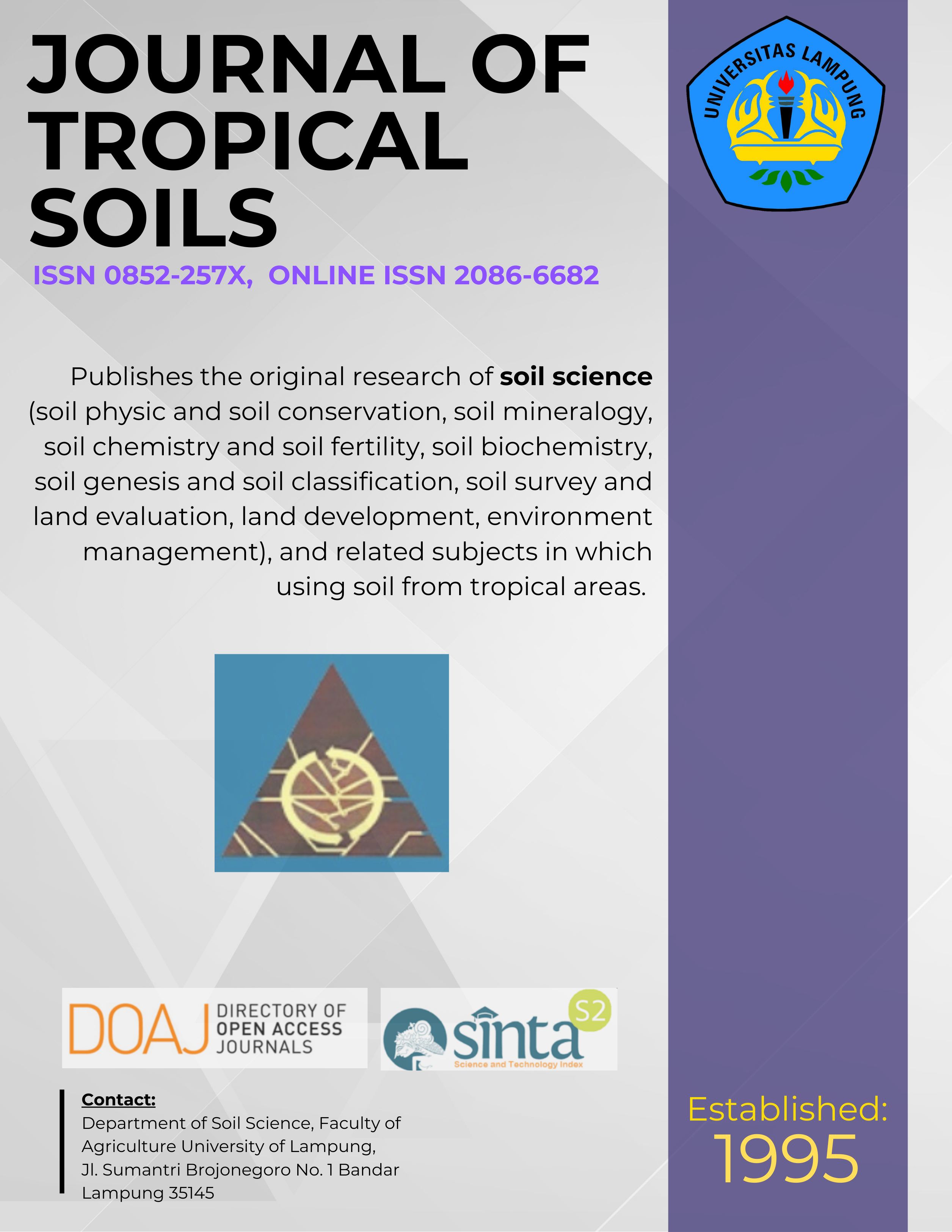The Relationship between Phosphate Adsorption and Soil Organic Carbon from Organic Matter Addition
Main Article Content
Abstract
The Relationship between Phosphate Adsorption and Soil Organic Carbon from Organic Matter Addition (FH Yusran): The application of organic matter (OM) can increase soil phosphorus (P) availability via soil mineralisation. In lateritic soils, however, soluble organic carbon (OC) from OM may also reduce phosphate adsorption capacity, a process that also releases P in soil solution. In these soils, competitive adsorption could be dominant compared to mineralisation. The main objectives of this study were to study phosphate adsorption in three lateritic soils which have been treated with different types and amounts of organic amendment, and had intrinsic OC removed by combustion. The adsorption isotherms showed that OM addition could reduce phosphate adsorption and that this reduction could last up to nine months after application. Lucerne hay was more effective than peat and wheat straw additions in reducing phosphate adsorption capacity. The bicarbonate phosphorus (BP) release through mineralisation occurred despite the increase of phosphate adsorption capacity due to the combustion of soil samples. Peat treatment was predicted to be more effective in creating organo-metal complexes with Al and Fe. Overall, mineralisation from added organic amendment was effective in minimising P adsorption in lateritic soil.
Â
Downloads
Article Details
Section
License for Authors
Authors who publish with this journal agree to the following terms:
- Authors retain copyright and grant the journal right of first publication with the work simultaneously licensed under a Creative Commons Attribution License that allows others to share the work with an acknowledgement of the work's authorship and initial publication in this journal.
- Authors are able to enter into separate, additional contractual arrangements for the non-exclusive distribution of the journal's published version of the work (e.g., post it to an institutional repository or publish it in a book), with an acknowledgement of its initial publication in this journal.
- Authors are permitted and encouraged to post their work online (e.g., in institutional repositories or on their website) prior to and during the submission process, as it can lead to productive exchanges, as well as earlier and greater citation of published work (See The Effect of Open Access).
License for Regular Users
Other regular users who want to cite, distribute, remix, tweak, and build upon author’s works, even for commercial purposes, should acknowledge the work’s authorship and initial publication in this journal, licensed under a Creative Commons Attribution License.

